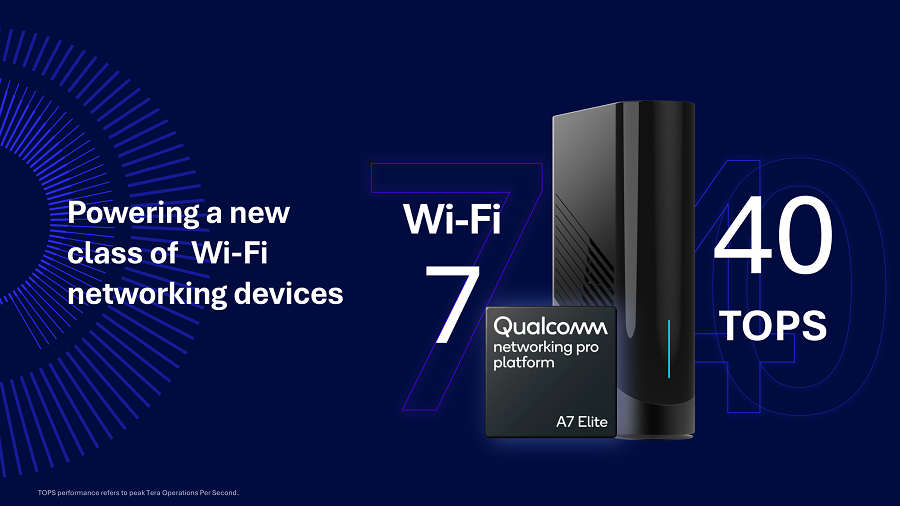 INFRA
INFRA
 INFRA
INFRA
 INFRA
INFRA
Qualcomm Inc. today debuted the Networking Pro A7 Elite, a new chip for powering routers and other network devices that provide Wi-Fi connectivity.
The chip is based on a new version of the Wi-Fi standard that rolled out earlier this year. Wi-Fi 7, as the technology is called, provides up to four times as much bandwidth as its predecessor. The new standard also promises several other benefits including lower latency and more reliable connections.
“The Networking Pro A7 Elite integrates key elements – from broadband to antenna – including 10G Fiber, 5G, Ethernet, RF-Front End modules and filters into one integrated platform,” said Ganesh Swaminathan, the vice president and general manager of Qualcomm’s wireless infrastructure and networking group.
Many Wi-Fi routers ship with multiple antennas that allow them to send and receive several streams of data at once. The more data streams a router supports, the higher its maximum bandwidth. Qualcomm’s new Pro A7 Elite can manage up to 16 streams, the maximum number supported by Wi-Fi 7 and double what the previous iteration of the wireless standard offers.
Wi-Fi 7 also introduces several other bandwidth-boosting features. It turns data into radio signals using 4096-QAM, a technology that encodes 20% more information into each pulse than the transmission method used by Wi-Fi 7. Another new feature, MLO, allows a Wi-i 7 router to spread a connection across multiple radio frequency bands in order to speed up data traffic.
Qualcomm says routers equipped with its new A7 Elite chip can provide up to 33 gigabytes per second of wireless bandwidth. The processor’s core Wi-Fi features are supported by a number of auxiliary components including an RF frontend. This is a subsystem that removes interference from the data-carrying radio signals received by a router’s antenna, which helps boost the reliability of wireless connections.
The A7 Elite’s networking circuits are integrated with an artificial intelligence coprocessor. Qualcomm says it has a maximum performance of 40 TOPs, or 40 trillion calculations per second. The module allows Wi-Fi devices equipped with the A7 Elite to run AI models locally, which provides better latency than sending data to a cloud-based algorithm for processing.
Qualcomm envisions hardware makers applying the A7 Elite’s coprocessor to a range of use cases. A company could, for example, build a router that uses AI to detect malicious network traffic. Neural networks installed on the A7 Elite can also troubleshoot technical issues, optimize power usage and perform other tasks.
The chipmaker offers a library of 100 preoptimized AI models to ease software development for network equipment makers. If a company’s requirements are not fully met by those algorithms, it can run custom software on the A7 Elite’s coprocessor. A software toolkit called the Qualcomm AI Stack eases the task of optimizing external neural networks for it silicon.
The A7 Elite is currently sampling to early customers.
Support our mission to keep content open and free by engaging with theCUBE community. Join theCUBE’s Alumni Trust Network, where technology leaders connect, share intelligence and create opportunities.
Founded by tech visionaries John Furrier and Dave Vellante, SiliconANGLE Media has built a dynamic ecosystem of industry-leading digital media brands that reach 15+ million elite tech professionals. Our new proprietary theCUBE AI Video Cloud is breaking ground in audience interaction, leveraging theCUBEai.com neural network to help technology companies make data-driven decisions and stay at the forefront of industry conversations.